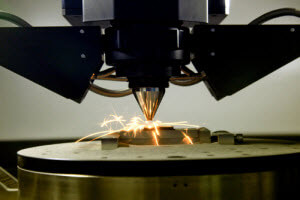3D Printing: Changing the Future of the Manufacturing Industry
3D printing is slowly becoming the standard for many manufacturing businesses, and it’s easy to see why. Known to promote faster production times and reduced operation costs, 3D printing is one of the most useful pieces of technology for any manufacturing company.
3D printing is relatively new, but we can already tell that it’ll transform the future of manufacturing in the best ways imaginable. Here are a few ways 3D printing is changing the future of the manufacturing industry.
Faster Product Development Through 3D Printing
 From designing new parts to testing and producing them, the product development cycle can be an extensive and time-consuming process for manufacturing companies. However, this product development will work to change that.
From designing new parts to testing and producing them, the product development cycle can be an extensive and time-consuming process for manufacturing companies. However, this product development will work to change that.
3D printing has been used for rapid prototyping for years. Rapid prototyping refers to creating copies of new product designs for testing. In the past, the process would take weeks to complete due to slow delivery times. Now, thanks to new automation technologies and printing services from global distribution companies, businesses can go through the rapid prototyping phase quicker, saving them both time and money.
3D printing is also changing the way companies create and test prototypes of new designs. Ford, for example, has used this technology to create more than 500,000 parts. Usually, the process of making and testing products took about four to five months and cost the company about $500,000. With 3D printing, they were able to produce parts in just hours or days, and the entire process would only cost a few thousand dollars.
Support Lean Manufacturing
 Lean manufacturing has provided businesses with countless benefits and has helped to increase productivity and overall efficiency. 3D printing will make it easier for companies to follow and support the lean manufacturing process.
Lean manufacturing has provided businesses with countless benefits and has helped to increase productivity and overall efficiency. 3D printing will make it easier for companies to follow and support the lean manufacturing process.
Lean manufacturing focuses heavily on reducing waste to enhance efficiency. One way to reduce waste is to stop overproducing parts and products. With this technology, overproduction will become a thing of the past. As technologies continue to advance, this technology will help businesses produce products more quickly and efficiently. On top of that, it’ll allow companies to manufacture items as needed, thus reducing the number of wasted products, as well as inventory and operational costs.
3D Printing Enhancing Product Flexibility
One of the biggest ways 3D printing is changing the future of the manufacturing industry is by increasing product creation flexibility and customization. Because this technology can help companies perform low volume production, they can create and test different kinds of parts, as well as products that are customized to meet specific consumer needs.
This is a fairly new method of production for the manufacturing industry. However, future technological advancements will promote higher levels of product customization to better serve the consumer market and increase overall profits.
3D printing isn’t the only technology that’s changing the future of the manufacturing industry. To learn more about the groundbreaking technologies in this industry, read our post discussing M2M Technology in Manufacturing, which is driving efficiency and lowering costs.

